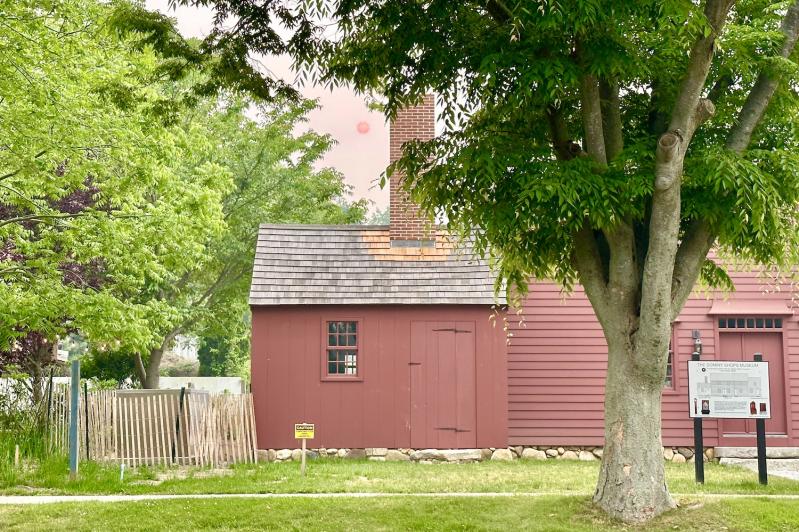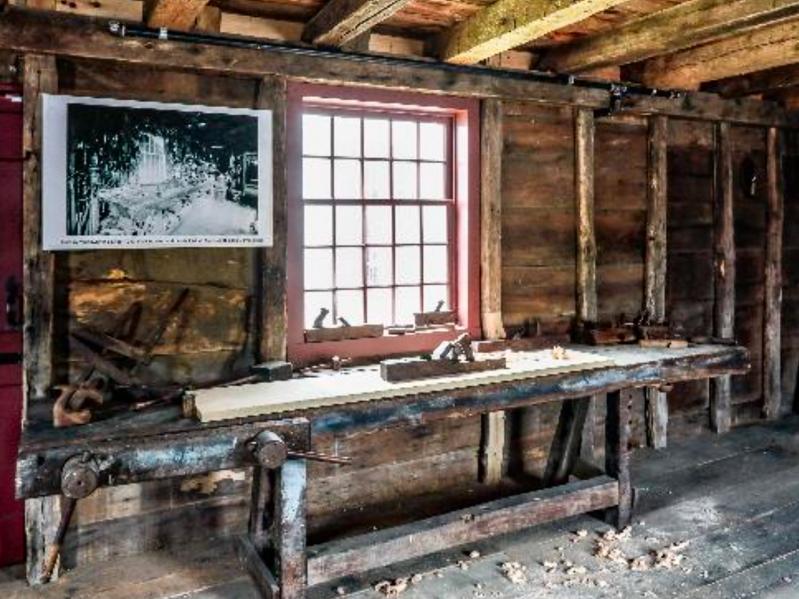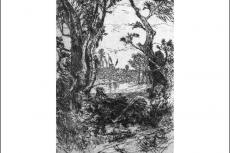Robert Hefner stood last week in the center of a timber frame house at 73 North Main Street, on land that once belonged to the Dominy family of tall-clock and cabinet makers. “This was one of the fanciest houses on Main Street,” he said.
East Hampton Village’s $2.3 million dollar restoration of the houses, paid for with a combination of taxes, donations, bonds, and grants, should be completed by early August, and will be known as the Dominy Shops Museum.
Mr. Hefner presented an update on the project to the village board in April, saying that the building would be the “feather in the cap” of the village. “Few other municipalities have accomplished such a restoration,” he said.
Returning the compliment, Mayor Jerry Larsen told Mr. Hefner, the village’s former director of historic services, “I don’t think this ever would have gotten done without your help.”

To rebuild the house and shops — saved from demolition almost 80 years ago by Dudley Roberts, a summer colonist, who used them as a pool house on his Further Lane property — the village reclaimed a chunk of the Emergency Services Building parking lot, which is precisely where the Dominys built their shops and homestead 250 years ago.
“That’s what drove the whole thing, these two beautiful shops,” said Mr. Hefner. “The point was not to restore the house, but the shops.”
While it might be somewhat jarring to glance out the back window of the wood shop and see an emergency communications tower, or out from the clock shop to see a life-size yellow cow belonging to Moo Moos, an ice cream shop, or out the front door to the East Hampton I.G.A., Stephen Long, the director of the East Hampton Historical Society, which will administer the new museum’s programming, said simply, “Landscapes change.”
“The important thing to me is that the Dominys were such a vital part of East Hampton’s cultural heritage,” Mr. Long added, and that preservation, which had been discussed before World War II, is now complete. “There had always been an understanding of how central the Dominys were to early East Hampton history, but there wasn’t a place where we could say, ‘This is where it happened.’ Now we have that.”
The main portion of the reconstructed house, which has an open layout showing off its exposed timber frame, will house most of the museum events. The woodworking shop — the original dates from 1791 — is off the north end of the building, while the clock shop, added in 1798, is off the other side.
“This is the spike that connected the clock shop to the corner post of the house,” said Mr. Hefner, pointing to what looks like a huge nail. The clock shop, he explained, was literally tacked onto the original house.
With Bruce Rambold, a partner at John Hummel and Associates, builders, and Zenon Tuminski, a carpenter, he took a moment to look down at architectural plans.
“Did we go over the offset of the shingles?” Mr. Hefner asked.
Innumerable such details went into the restoration. Over in the woodworking shop, he pointed to a window, larger than the others. “There’s nothing like rebuilding the real thing in the real context to see how it worked,” he said, explaining that the Dominys would have worked right in front of the window, to take advantage of the light.
Generations of the family built the bits and pieces that made life work in the 18th century: furniture, spinning wheels, window sashes, farm implements, carriage and wagon parts. They even repaired boats. Across the house, in a workroom off the forge, they built their famous clocks and repaired watches.
The forge, “the only authentic 18th-century forge in America today,” according to Mr. Hefner, is a wonder. The masonry work, which involved “painstaking study,” was completed in April by Jim Cangiolosi and his son Phil. Some of the bricks are original, others were sourced from Connecticut. There’s a market for these old bricks, Mr. Hefner remarked, which are often saved when centuries-old houses are torn down.
“They cost less than custom reproductions of the same bricks,” he said. He went so far as to dissolve some of the old mortar from the original Dominy house bricks, to match the color exactly. “Authenticity is what we strove for.”
The museum’s first exhibition will highlight the restoration project itself, said Mr. Long. An exhibit opening at Clinton Academy over the July Fourth weekend, focusing on the local people who bought Dominy products, will move into the Dominy Shops Museum after Labor Day.
“A physical manifestation of that past reminds us of the formation of this community,” said Mr. Long. “The Dominys’ artisanal craftsmanship was renowned not just in East Hampton, but all over Long Island, and even the Northeast.”
“The Dominys are the best-documented family of 18th-century woodworking and clockmaking,” said Mr. Hefner. “This is a story of 18th-century craftmanship you can’t tell anywhere else.”




